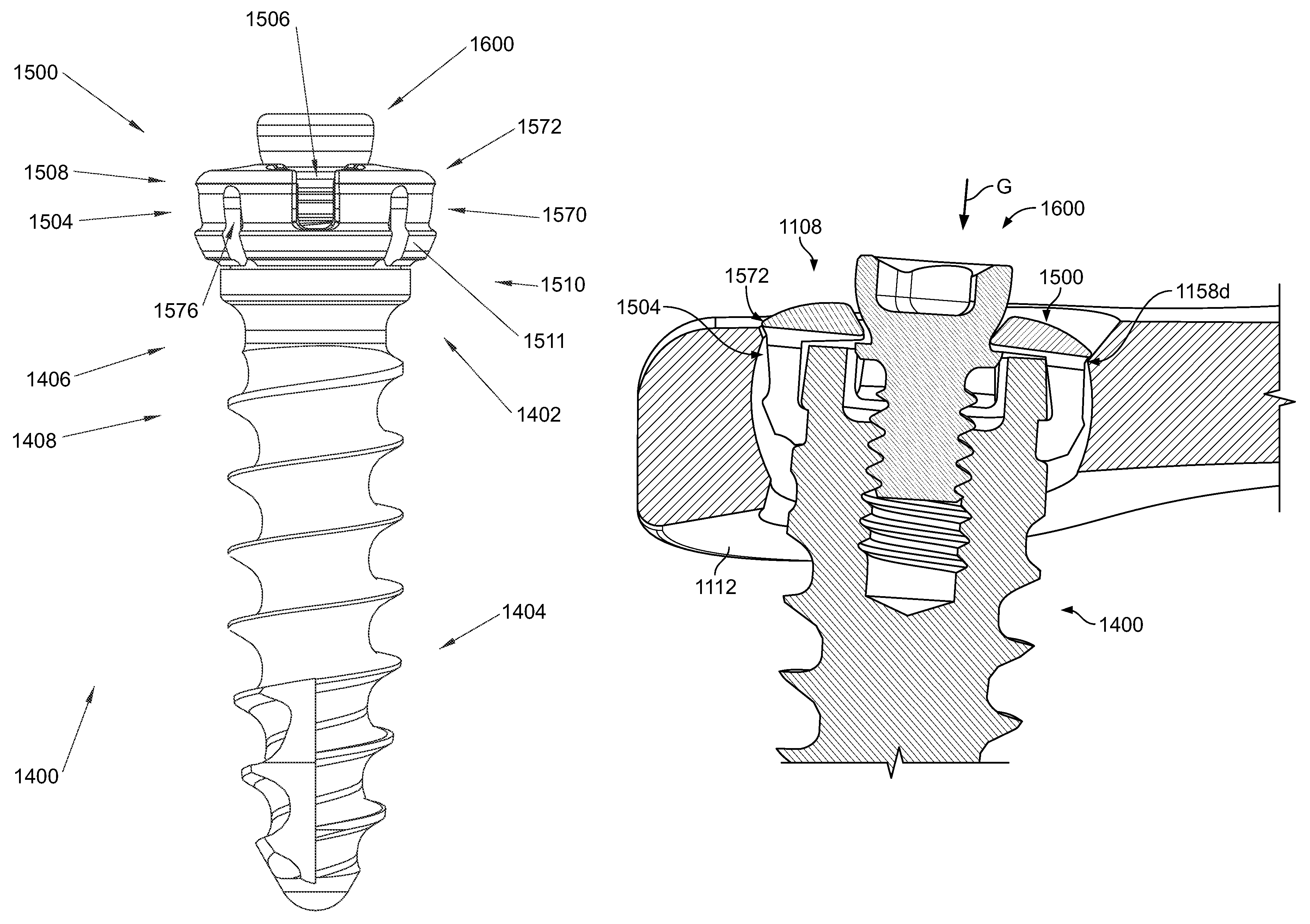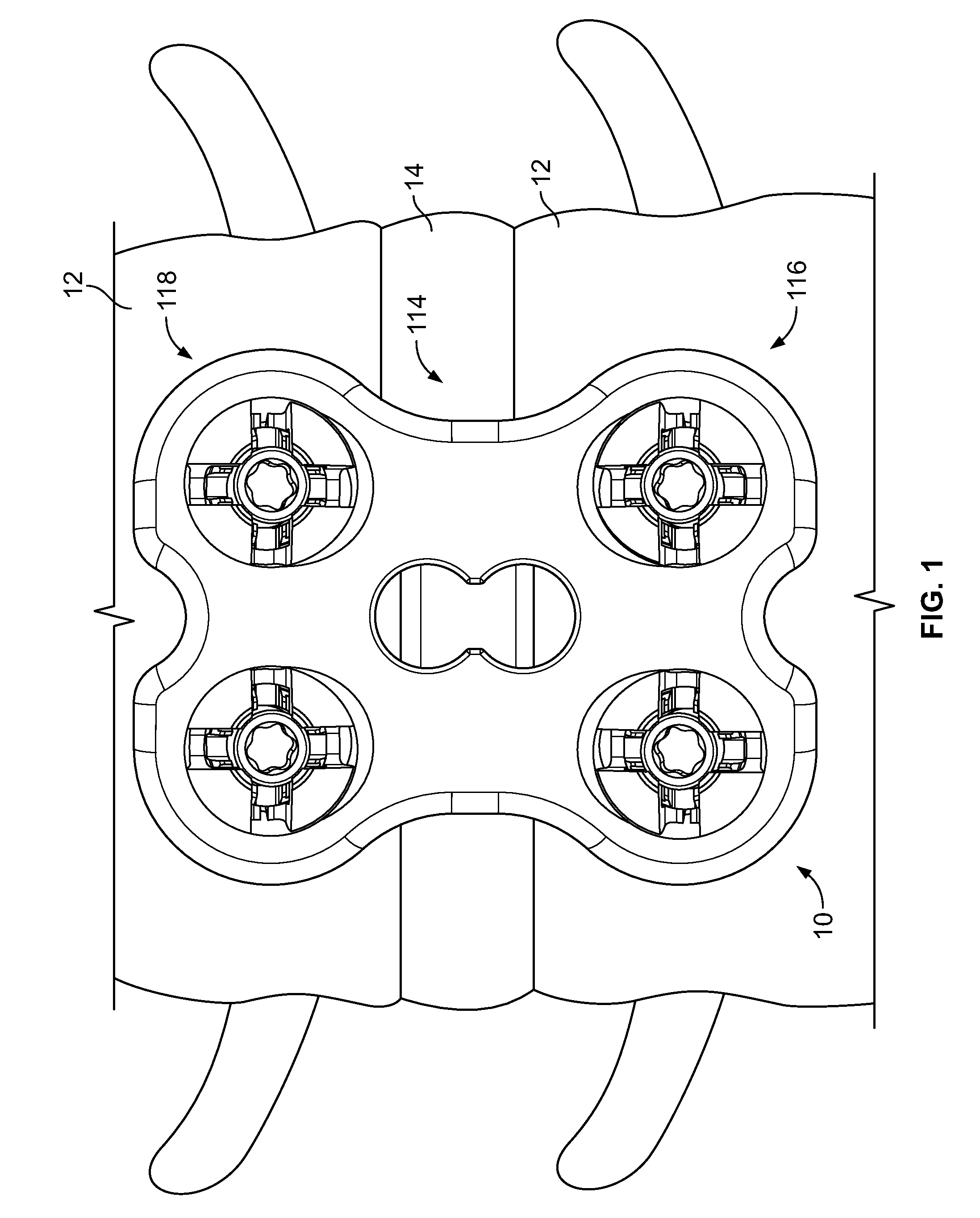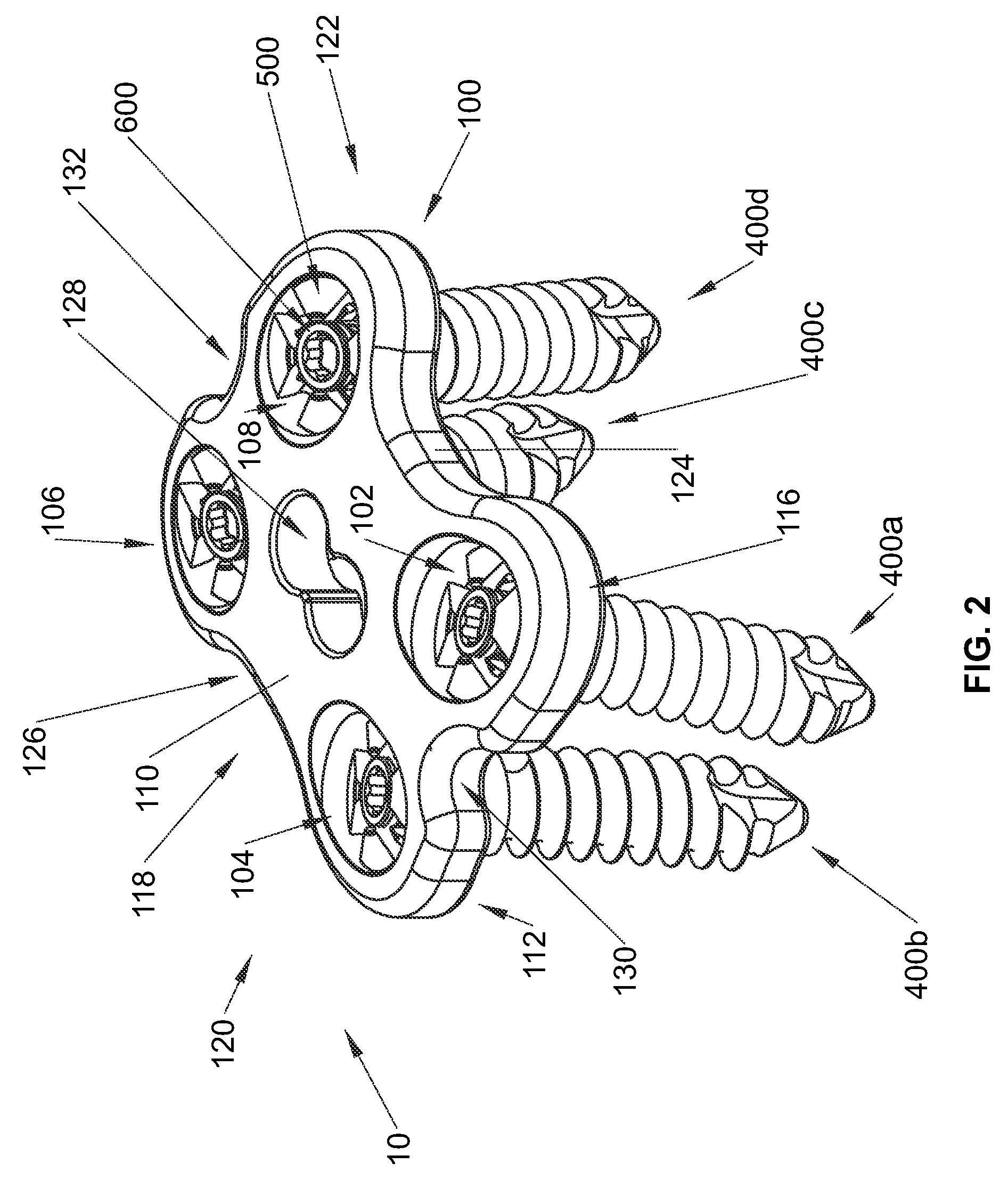Bone plate system
a technology of bone plate and plate plate, applied in the field of bone plate system, can solve the problems of tearing soft tissues supporting the spine, breaking bones, and deteriorating bones
- Summary
- Abstract
- Description
- Claims
- Application Information
AI Technical Summary
Benefits of technology
Problems solved by technology
Method used
Image
Examples
Embodiment Construction
[0079]Referring initially to FIG. 1, a bone plate system 10 is depicted shown connected on the anterior surface of adjacent lumbar vertebrae 12 that are spaced by an intervertebral disc 14. In general, the bone plate system 10 may be used to secure one or more bones in a desired spatial relationship to aid in their healing. The bone plate system 10 may also be used to assist in the healing necessary after trauma or degenerative disorders have affected the intervertebral disc 14. Furthermore, the bone plate system 10 may be used to correct and / or relieve a variety of spinal disorders, including but not limited to degenerative disorders, disorders induced by trauma, and pinched nerves.
[0080]Turning to FIG. 2, the bone plate system 10 is shown having a bone plate 100 and bone anchor assemblies 400a-400d. The bone plate 100 is generally configured to be placed on one or more bones before bone anchor assemblies 400 are inserted into through bores 102, 104, 106, 108 which extend between u...
PUM
 Login to View More
Login to View More Abstract
Description
Claims
Application Information
 Login to View More
Login to View More - R&D
- Intellectual Property
- Life Sciences
- Materials
- Tech Scout
- Unparalleled Data Quality
- Higher Quality Content
- 60% Fewer Hallucinations
Browse by: Latest US Patents, China's latest patents, Technical Efficacy Thesaurus, Application Domain, Technology Topic, Popular Technical Reports.
© 2025 PatSnap. All rights reserved.Legal|Privacy policy|Modern Slavery Act Transparency Statement|Sitemap|About US| Contact US: help@patsnap.com



